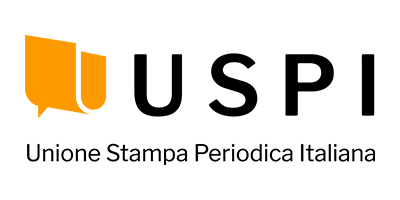China ADAS and Autonomous Driving Tier 1 Suppliers Research Report 2024: Suppliers Enter Intense Competition, and ADAS Tier1s Explores New Businesses Such as Robots - ResearchAndMarkets.com
The "ADAS and Autonomous Driving Tier 1 Suppliers Research Report, 2024 - Chinese Companies" report has been added to ResearchAndMarkets.com's offering. ADAS Tier1s Research: Suppliers enter intense c...
DUBLIN: The "ADAS and Autonomous Driving Tier 1 Suppliers Research Report, 2024 - Chinese Companies" report has been added to ResearchAndMarkets.com's offering.
ADAS Tier1s Research: Suppliers enter intense competition while exploring new businesses such as robotics
In China's intelligent driving market, L2 era is dominated by foreign suppliers. Entering era of L2 + and above (including L2 +, L2.5 and L2.9), domestic ADAS suppliers have begun to dominate. Therefore, compared with two years ago, the lineup of domestic ADAS Tier1 is expanding year by year. The 'Chinese ADAS and Autonomous Driving Tier 1 Suppliers Report, 2021-2022' studied 7 Tier1s, 2023 version studied 12 Tier1s, and this 2024 version expanded to 20 Tier1s.
Tier 1 accelerates the development of advanced intelligent driving functions, and the automotive industry enters 'standard configuration era' of intelligent driving
With the continuous iteration of software algorithms and reduction of hardware costs such as large computing power chips and sensors, the landing of intelligent driving has solid software and hardware support. At present, the installation volume and installation rate of domestic passenger car ADAS system functions (L1-L2.9) have been steadily improved, and L2 and L2 ++ autonomous driving are in the stage of rapid improvement in terms of penetration rate. In 2023, the installation volume of L2, L2 +, L2.5, and L2.9 increased by 37.0%, 71.9%, 124.9%, and 63.1% year-on-year compared with 2022. As of January-April 2024, the penetration rate of passenger cars equipped with L2 and above rose from 34.8% in 2022 to 53.8% in 2024 (Jan.-Apr.).
At present, the intelligent driving market is in a window period of accelerated penetration, providing huge development opportunities for major automakers to build 'the most powerful intelligent driving'. From the perspective of newly listed cars, the installation rate of L2 and above ADAS functions has risen sharply, of which L2.5 and L2.9 have increased significantly. In 2022, the installation rate of L2.5 functions of newly listed passenger cars in China was 13.25%. As of 2024 (Jan.-Apr.), it has increased to 19.86%. The installation rate of L2.9 functions has increased from 12.36% in 2022 to 23.4%. This is consistent with the trend of domestic automakers and Tier 1s focusing on advanced ADAS, large-scale landing of driving-parking integration and NOA solutions.
According to enterprise type, joint venture brand is the main force of L2 ADAS currently. 47.48% of joint venture models in 2023 are equipped with L2; the installation rate reached 55.05% in 2024 (Jan.-Apr.). Mid-end and high-end models are important target markets for L2.9 functions. The installation rate of models priced at 250-300,000 yuan and more than 300,000 yuan is higher. Among them, the installation rate of 250-300,000 yuan price range is the highest. As of 2024 (Jan.-Apr.), the installation rate of passenger cars in this price range has increased from 23.34% in 2023 to 40.89%; the installation rate of high-end models priced over 500,000 yuan has the fastest growth rate, increasing from 6.73% in 2023 to 24.39% in 2024 (Jan.-Apr.).
In addition, as the intelligent driving technology route becomes clearer, many OEMs are making intensive efforts in urban NOA in terms of technical path, city scale, landing speed and cost, and the competition has entered a white-hot stage. L2.9 installation has begun to show a downward trend, and L2.9 installation rate in the price range of 200-250,000 yuan has risen from 5.15% in 2023 to 9.32%; indicating that users' recognition and acceptance of high-level autonomous driving are gradually increasing, and high-level autonomous driving also reflects the core competitiveness of many OEMs.
Tier 1 Reform: Subverting the traditional supply chain and reshaping the new ecosystem of intelligent connected vehicles
With the acceleration of automotive intelligent connection wave, the automotive industry chain, technology chain, and value chain are accelerating deconstruction and reshaping. In terms of industrial chain, the original industrial boundaries are expanding, and more specialized new industrial entities are emerging. At the same time, the vertical chain industrial structure is shifting to a horizontal mesh structure, and new local industrial chains will be derived. The role positioning and development model of OEMs and Tier1 will undergo major changes. First, the automotive industry will further evolve into a multi-party ecosystem, with participants including OEMs, Internet companies, ICT companies, artificial intelligence companies, cloud computing service providers, big data companies, Tier2/Tier1/Tier0.5 suppliers, and governments. This multi-party model will promote the collaborative development and innovation of the entire industrial chain.
Secondly, the past vertical supply model will be broken, and the automotive supply chain will begin to develop into a mesh. In the past, automotive OEMs mainly defined functional architectures and participated in system integration work, and supply chain implemented the vertical supply model of Tier3 → Tier2 → Tier1. OEMs mainly cooperated directly with Tier1 suppliers. Under the trend of the overall change of 'software-defined vehicles', in order to achieve more functional differentiation features, improve development efficiency, and realize code reuse, OEMs will also participate in the development of applications, and the automotive supply chain will begin to develop into a mesh.
At present, some automakers purchase software and hardware separately, and the procurement method has become very flexible. A set of integrated driving-parking system can be divided into sensors, controllers, system integration, application software development and other components. For the necessary and capable parts, automakers will choose to develop their own, while other parts will be purchased through suppliers.
At present, Tier1 is mainly provided to OEMs through gray-box or white-box mode.
White-box mode: Tier1 is responsible for hardware production, middle layer and chip solution integration, OEM is responsible for software part of application layer of autonomous driving, or Tier1 is only responsible for hardware production, OEM or its designated software supplier is responsible for the system architecture and application layer development of domain controllers. Typical cases: Desay SV + NVIDIA + Xiaopeng/Li Auto/IM, Zeekr + Mobileye + iMotion, etc.
Gray-box mode: OEMs put forward customized requirements, and Tier1 provides R & D services, which are finally presented in the form of independent R&D by OEMs. At the same time, OEMs may also develop their own domain controller system architecture and autonomous driving application layer algorithm software development. The final product logo is designated by OEM.
Key Topics Covered:
1 Overview of ADAS and Autonomous Driving System
1.1 Levels of Intelligent Vehicle Autonomous Driving
1.2 Development Plan for Intelligent Vehicle Autonomous Driving
1.3 Regulations and Policies related with Intelligent Vehicle Autonomous Driving
1.4 Intelligent Vehicle Autonomous Driving System Architecture
1.5 Decision Layer of Autonomous Driving
1.6 Actuation Layer of Autonomous Driving
1.7 Installation Volume and Installation Rate of Passenger Car ADAS System in China
1.8 Passenger Car ADAS Solutions in China
2 Comparison of Products and Solutions between Tier 1 Suppliers
2.1 Software and Hardware Layout of Major Tier 1 Suppliers in China
2.1.1 Comparison of Front View Cameras Layout between Major Tier 1 Suppliers in China
2.1.2 Comparison of Radar Layout between Major Tier 1 Suppliers in China
2.1.3 Comparison of Domain Controllers/Computing Platforms between Major Tier 1 Suppliers in China
2.1.4 Comparison of Algorithm/Software Layout between Major Tier 1 Suppliers in China
2.2 Comparison of Intelligent Driving Solutions between Major Tier 1 Suppliers in China
3 Products and Solutions of Tier 1 Suppliers
3.1 Desay SV
3.2 HiRain Technologies
3.3 Baidu Apollo
3.4 Huawei
3.5 Neusoft Reach
3.6 Freetech
3.7 iMotion
3.8 SenseTime
3.9 Hong Jing Drive
3.10 Yihang.AI
3.11 MAXIEYE
3.12 Haomo.ai
3.13 Momenta
3.14 Minieye
3.15 PhiGent Robotics
3.16 Zongmu Technology
3.17 Metoak
3.18 NavInfo
3.19 QCraft
3.20 Zhuoyu Technology
4 Exploration of Competition & Cooperation in Tier 1 Industry Chain
4.1 Supply Chain Relationships in China's Intelligent Driving Market
4.2 Exploration of Cooperation Model between Tier 1 Suppliers and OEMs in China
4.3 Exploration of Cooperation Model between Tier 1 Suppliers and Chip Vendors in China
4.4 Exploration of Software Development and Cooperation between Tier 1 Suppliers in China
4.5 Exploration of Competitive Pattern between Tier 1 Suppliers in China
4.6 Cases of Tier1s' Expansion of Non-automotive Business
For more information about this report visit https://www.researchandmarkets.com/r/4kbil3
About ResearchAndMarkets.com
ResearchAndMarkets.com is the world's leading source for international market research reports and market data. We provide you with the latest data on international and regional markets, key industries, the top companies, new products and the latest trends.
Fonte: Business Wire
Related news
Last News
RSA at Cybertech Europe 2024
Alaa Abdul Nabi, Vice President, Sales International at RSA presents the innovations the vendor brings to Cybertech as part of a passwordless vision for…
Italian Security Awards 2024: G11 Media honours the best of Italian cybersecurity
G11 Media's SecurityOpenLab magazine rewards excellence in cybersecurity: the best vendors based on user votes
How Austria is making its AI ecosystem grow
Always keeping an European perspective, Austria has developed a thriving AI ecosystem that now can attract talents and companies from other countries
Sparkle and Telsy test Quantum Key Distribution in practice
Successfully completing a Proof of Concept implementation in Athens, the two Italian companies prove that QKD can be easily implemented also in pre-existing…
Most read
Mastercard Incorporated to Host Information Session on Agentic Commerce…
On Monday, July 14, 2025 at 10:00 a.m. Eastern Time, Mastercard Incorporated (NYSE: MA) will host a session to explore Mastercard’s recent announcements…
Wave Function™ and Packsmith.ai: Redefining E-Commerce with AI Logistics
#3PL--Wave Function™, a New Bedford, MA-based founding partnership company, has invested in Packsmith.ai, a Los Angeles-based, AI-driven third-party logistics…
AI Unicorn EvenUp Opens New San Francisco Headquarters to Catalyze Growth…
#AI--EvenUp, the highest-funded AI technology company serving personal injury law firms, has officially opened its new headquarters at 353 Sacramento…
Amazon Prime Day 2025 Delivers Record Sales and Savings in Expanded Four-Day…
Amazon announced today that Prime Day 2025 was its biggest Prime Day event ever and that customers saved billions on deals across more than 35 product…






